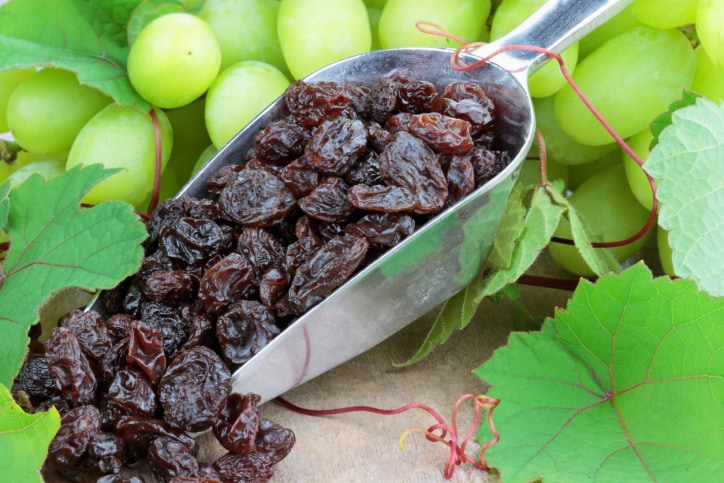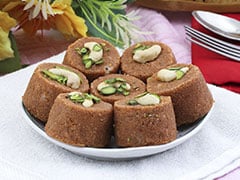Story ProgressBack to home
Sultana(मुनक्का)
Hindi Name:मुनक्का
Native to Turkish origin, Sultanas are large white grapes to rich golden-brown colour. Sultanas are often confused for raisins and currants, as all are dried forms of grapes. What differentiates Sultana from the other two varieties is its tenderness and sweetness.
- NDTV Food
- Nov 21 2014 13:17 IST
 Native to Turkish origin, Sultanas are large white grapes to rich golden-brown colour. Sultanas are often confused for raisins and currants, as all are dried forms of grapes. What differentiates Sultana from the other two varieties is its tenderness and sweetness. They are golden in color and are more plump, sweet and juicy when compared to raisins. They are referred to as Golden raisins in some parts of the US. Sultanas are the dried fruit of seedless grapes coming in varied shapes from round to oval. They are a convenient low fat snack.
Native to Turkish origin, Sultanas are large white grapes to rich golden-brown colour. Sultanas are often confused for raisins and currants, as all are dried forms of grapes. What differentiates Sultana from the other two varieties is its tenderness and sweetness. They are golden in color and are more plump, sweet and juicy when compared to raisins. They are referred to as Golden raisins in some parts of the US. Sultanas are the dried fruit of seedless grapes coming in varied shapes from round to oval. They are a convenient low fat snack.
Turkish sultanas are classified into numbers 8, 9, 10, 11 based on the colour of sultanas: type 8 is dark brown colour; type 9 has brownish tint; type 10 is light brown sultana and type 11 is light brown to golden colour sultanas. For their sweet and succulent nature, Sultanas are the best choice for biscuits, desserts and cakes. It is also a good condiment for baked goods. They are added to cookies, breads and muffins. Sultanas need to be stored in an airtight container to extend their freshness. They are available all-year round.
Usage
Aside from being consumed simply as a snack, they are also used to produce fruit juice and alcohol. Originally used to make wine, its primary use nowadays is for raisins. They are added to cakes and other desserts owing to the fact that they are seedless. The warm flavour also makes it a good addition to savoury dishes and various cereals. Often referred to as the 3-way grape, it is used as table grapes, raisins as well as for making wine.
It is the most planted grape in California. It is used to add a rich flavour to many breakfast cereals. Often added to yoghurts, ice-creams and a variety of desserts.
Nutritional Value
1. Sultanas are an excellent source of potassium, iron and vital nutrients.
2. The rich fibre content keeps the digestive tract healthy.
3. They are also beneficial for high blood pressure and anaemia.
4. They have a high calorie count and contain lots of minerals.
Did you know?
The American variety of sultana grape is called Thompson seedless raisins.






